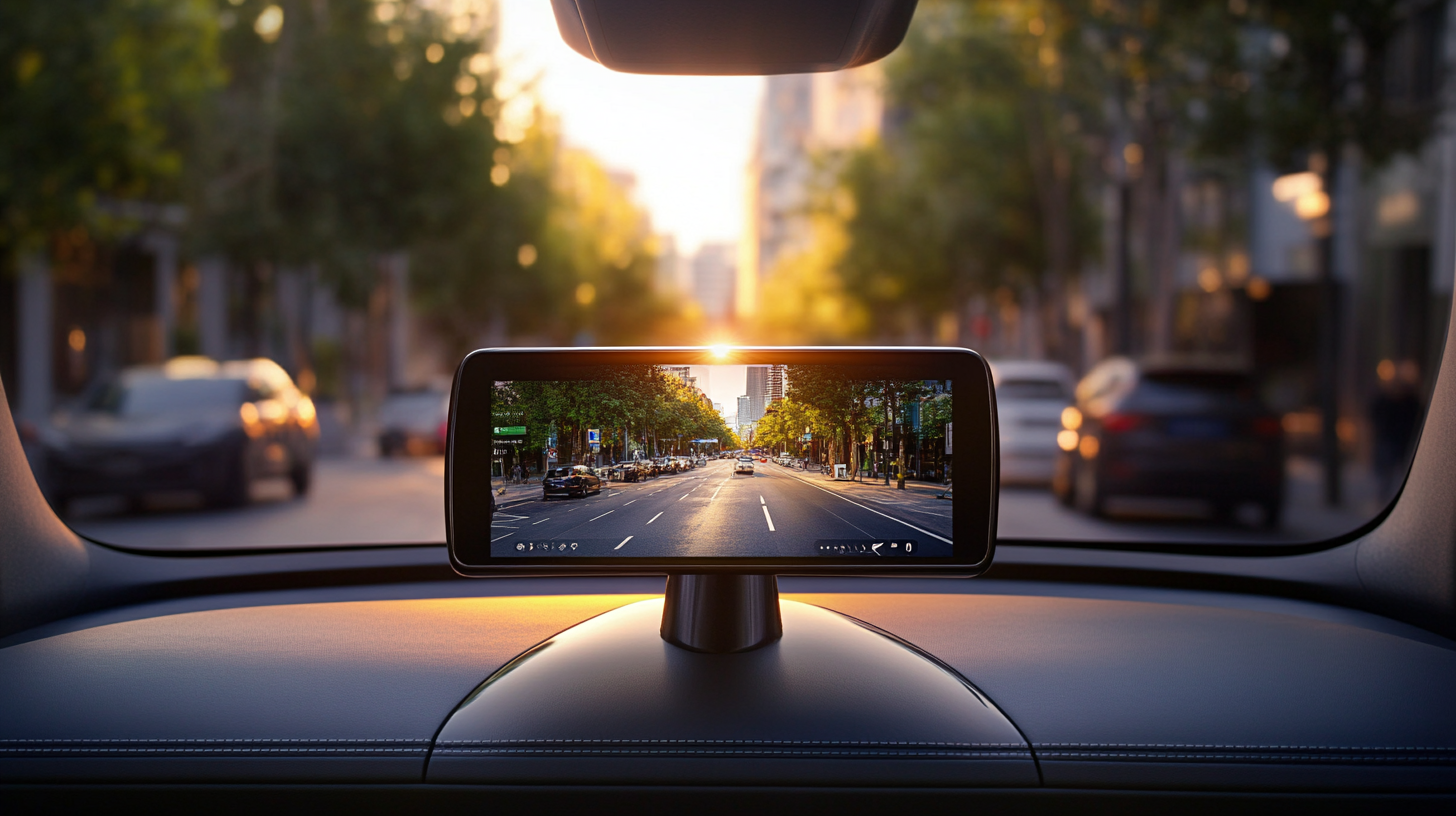Leave Your Message
As the automotive industry continues to evolve, the incorporation of advanced technologies into vehicle safety systems has never been more critical. According to a report by MarketsandMarkets, the global rear view monitor market is projected to reach $17.52 billion by 2026, growing at a CAGR of 10.5% from 2021. This growth is driven by increasing consumer demand for safety features and the rising adoption of driver assistance systems across vehicles. Rear view monitors, which enhance visibility and minimize blind spots, play a pivotal role in accident prevention and improving overall driving safety. With the proliferation of smart sensors and innovative imaging technologies, there is significant potential to enhance the functionality and effectiveness of rear view monitors. This blog will explore cutting-edge approaches aimed at transforming rear view monitor technology, ultimately aiming for an unprecedented level of safety and convenience in automotive design.

Emerging technologies are revolutionizing rear view monitor systems, enhancing safety and improving the driving experience. One of the most significant developments is the integration of artificial intelligence (AI) within these systems. AI algorithms can analyze real-time data from cameras and sensors to detect obstacles, pedestrians, and even other vehicles, providing drivers with prompt alerts and suggestions, thus reducing the chances of accidents.
Another innovative approach is the use of augmented reality (AR) to overlay critical information onto the rear view displays. AR can provide contextual information about distance, speed, and navigation cues, allowing drivers to make more informed decisions while reversing or changing lanes. This immersive experience not only makes driving safer but also increases overall situational awareness, especially in crowded urban environments.
Moreover, advancements in camera technology, such as high-resolution imaging and 360-degree views, are further enhancing rear view monitor systems. These state-of-the-art cameras offer a comprehensive view of the surroundings, minimizing blind spots that traditional mirrors often leave unchecked. As these emerging technologies continue to develop, we can expect rear view monitor systems to become even more sophisticated, providing a seamless blend of safety and convenience for drivers everywhere.

The incorporation of artificial intelligence (AI) in rear view monitor technology is revolutionizing how drivers interact with their vehicles. These advanced systems utilize machine learning algorithms to analyze real-time footage, thereby enhancing the accuracy of object detection and distance calculation. By recognizing patterns and familiarizing themselves with the driver's routines, AI-driven systems can minimize blind spots and predict potential hazards more effectively than traditional monitors.
Moreover, AI-driven rear view monitoring systems continuously improve through data accumulation. As they process more driving scenarios—such as different lighting conditions, weather variations, and diverse environments—they become adept at delivering precise feedback to users. This not only aids in preventing accidents but also enhances overall driving confidence. As manufacturers integrate more AI capabilities, the potential for more intuitive and user-friendly interfaces increases, ultimately leading to safer driving experiences. With these innovations, the future of rear view monitoring is not just about observation but active assistance in real-time driving situations.
This chart illustrates the evaluation of various attributes of rear view monitors enhanced by AI technology. It demonstrates a comparison across key factors such as Camera Resolution, AI Detection Accuracy, User Comfort, Installation Ease, and Cost Efficiency, highlighting the significant role of AI in improving rear view monitoring accuracy.
As the automotive industry evolves, integrating augmented reality (AR) into rear view monitor technology represents a groundbreaking advancement. Traditional rear view systems, while functional, often miss critical situational context that AR can provide. By overlaying digital information onto a live feed, AR enhances driver awareness by highlighting nearby obstacles, pedestrians, and other vehicles, transforming the rear view experience into an intuitive visual interface.
The integration of AR into rear view monitors enables drivers to perceive their surroundings with heightened awareness. For instance, as a driver reverses, the system can dynamically display warnings or guides directly onto the real-time image, helping to identify potential hazards before they become critical. Moreover, features such as lane markings or distance indicators can assist drivers in making more informed decisions, thereby reducing the likelihood of accidents. This technology not only improves safety but also encourages a more confident driving experience, especially for those navigating crowded urban environments.
By enhancing the way drivers engage with their vehicle's surroundings, AR-equipped rear view monitors set the stage for smarter, safer driving solutions. This innovation could soon become a standard feature in vehicles, promoting a greater synergy between drivers and their external environment.
The evolution of rear view monitor technology has seen a shift from simple camera displays to advanced systems that prioritize user experience. At the heart of this transformation lies user-centric design, which focuses on understanding the needs and preferences of drivers. By integrating features such as customizable display settings, intuitive interfaces, and voice-activated controls, manufacturers are creating rear view monitors that not only enhance safety but also simplify the driving experience.
Moreover, recent innovations include augmented reality overlays that provide real-time data, such as distance to obstacles and active traffic signals, directly on the screen. This user-focused approach allows drivers to make informed decisions quickly, reducing the chances of accidents. Comfort is also a critical factor; ergonomic designs ensure that the monitors are positioned for optimal visibility without obstructing the driver's line of sight. Through these innovations, rear view monitor technology is becoming more than just a functional accessory—it's an essential tool that enhances both safety and user satisfaction on the road.
| Innovation | Description | User Benefits | Implementation Status |
|---|---|---|---|
| 360-Degree Vision | Integrating multiple cameras to provide a comprehensive view around the vehicle. | Eliminates blind spots and enhances safety during maneuvers. | In development |
| Augmented Reality Overlays | Displaying real-time data and navigation information over the live feed. | Improves navigation and situational awareness. | Prototype tested |
| Adaptive Brightness Control | Automatic adjustment of screen brightness based on ambient light. | Enhances visibility in various lighting conditions. | Currently deployed |
| Voice-Activated Controls | Hands-free operation of rear view monitor features using voice commands. | Promotes safer driving by reducing distractions. | Available in select models |
The evolution of rear view monitor technology is witnessing significant advancements, particularly with the introduction of electronic rearview mirrors. Recent automotive exhibitions have showcased a variety of vehicles equipped with these innovative camera-monitor systems, highlighting their potential to enhance safety and provide greater versatility compared to traditional mirrors. However, despite the excitement surrounding these technologies, concerns about their practicality and the actual demand for them linger in the automotive community.
As we look to the future, the focus seems to be shifting towards integrating smart technologies and artificial intelligence into rear view systems. These advancements aim to address some of the limitations associated with electronic mirrors, such as visibility issues in different lighting conditions and user adaptability. With manufacturers emphasizing the need for safety alongside technological innovation, the next generation of rear view monitoring could revolutionize our driving experience, making it safer and more intuitive. The industry appears poised on the brink of a major transformation as the desire for smarter, technology-driven solutions continues to grow.

